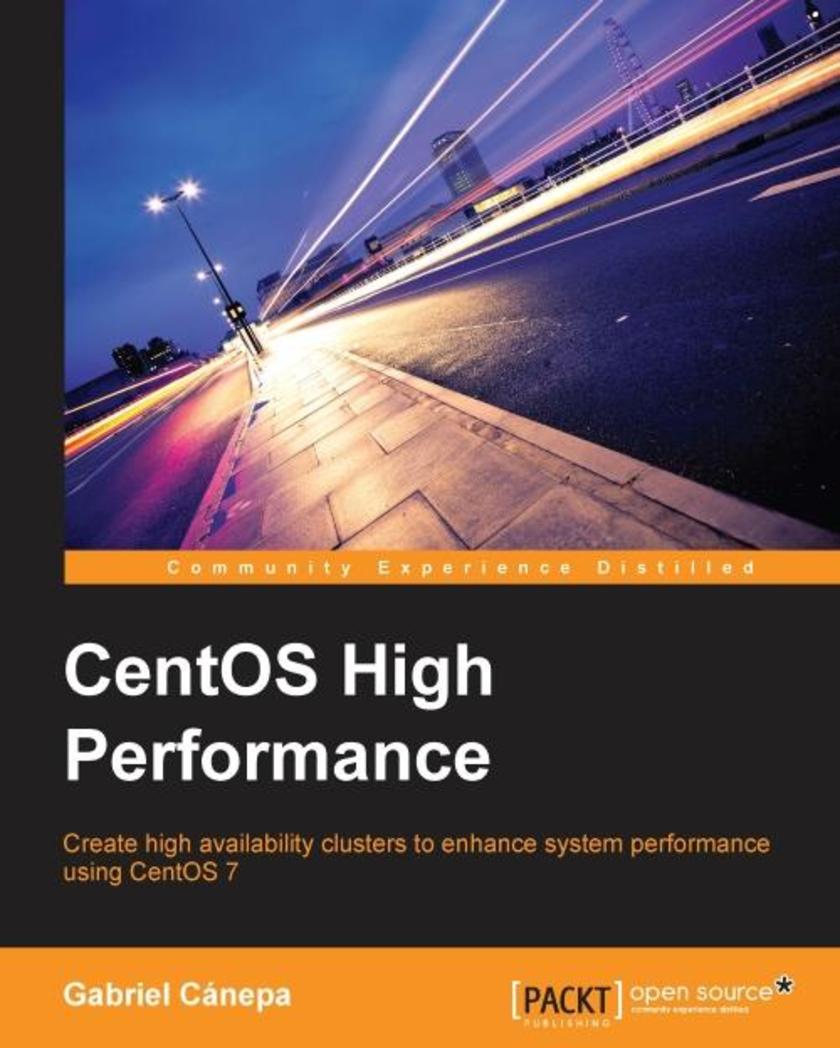
CentOS High Performance
¥63.21
Create high availability clusters to enhance system performance using CentOS 7About This BookMaster the concepts of high performance and high availability to eliminate performance bottlenecksMaximize the uptime of services running in a CentOS 7 clusterA step-by-step guide that will provide knowledge of methods and approaches to optimize the performance of CentOS clustersWho This Book Is ForThis book is targeted at system administrators: those who want a detailed, step-by-step guide to learn how to set up a high-availability CentOS 7 cluster, and those who are looking for a reference book to help them learn or refresh the necessary skills to ensure their systems and respective resources are utilized optimally. No previous knowledge of high-availability systems is needed, though the reader is expected to have at least some degree of familiarity with any spin-off of the Fedora family of Linux distributions, preferably CentOS.What You Will LearnInstall a CentOS 7 cluster and network infrastructureConfigure firewall, networking, and clustering services and settingsSet up and test a HAC (high-availability cluster) to host an Apache web server and a MariaDB database serverMonitor performance and availabilityIdentify bottlenecks and troubleshoot issuesImprove performance and ensure high availabilityIn DetailCentOS is the enterprise level Linux OS, which is 100% binary compatible to Red Hat Enterprise Linux (RHEL). It acts as a free alternative to RedHat's commercial Linux offering, with only a change in the branding. A high performance cluster consists in a group of computers that work together as one set parallel, hence minimizing or eliminating the downtime of critical services and enhancing the performance of the application.Starting with the basic principles of clustering, you will learn the necessary steps to install a cluster with two CentOS 7 servers. We will then set up and configure the basic required network infrastructure and clustering services. Further, you will learn how to take a proactive approach to the split-brain issue by configuring the failover and fencing of the cluster as a whole and the quorum of each node individually. Further, we will be setting up HAC and HPC clusters as a web server and a database server. You will also master the art of monitoring performance and availability, identifying bottlenecks, and exploring troubleshooting techniques.At the end of the book, you’ll review performance-tuning techniques for the recently installed cluster, test performance using a payload simulation, and learn the necessary skills to ensure that the systems, and the corresponding resources and services, are being utilized to their best capacity.Style and approachAn easy-to-follow and step-by-step guide with hands-on instructions to set up real-world simple cluster scenarios that will start you on the path to building more complex applications on your own.
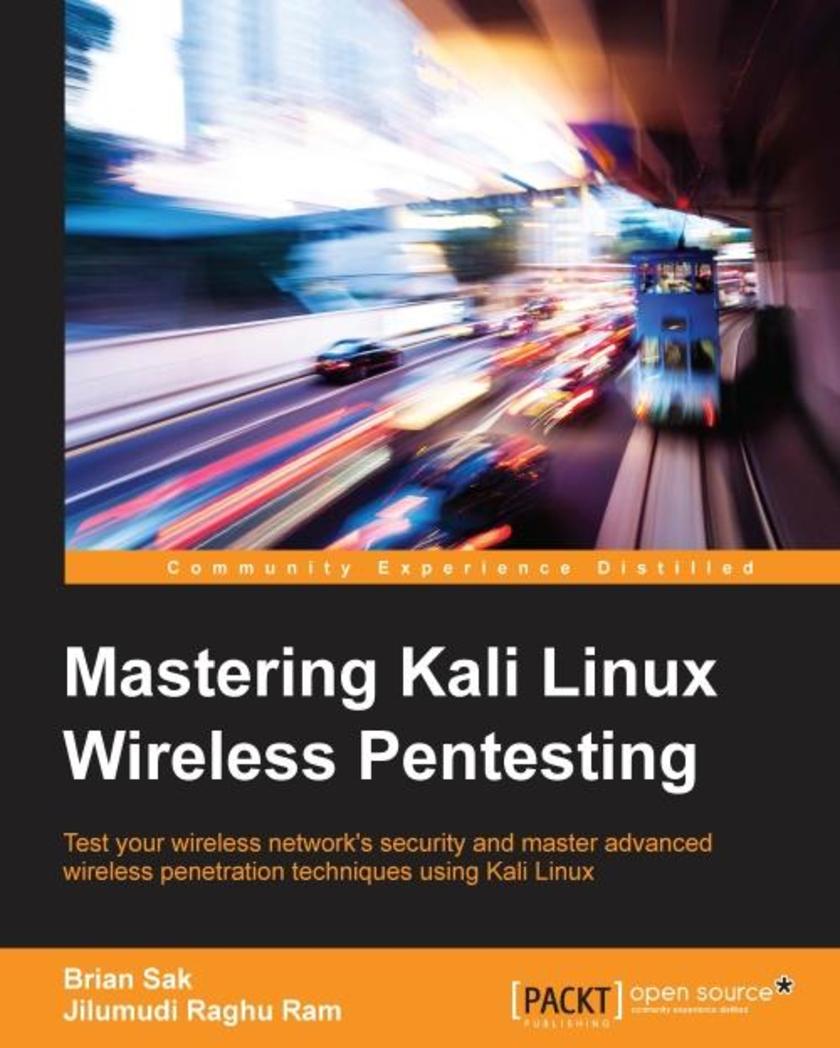
Mastering Kali Linux Wireless Pentesting
¥90.46
Test your wireless network’s security and master advanced wireless penetration techniques using Kali LinuxAbout This BookDevelop your skills using attacks such as wireless cracking, Man-in-the-Middle, and Denial of Service (DOS), as well as extracting sensitive information from wireless networksPerform advanced wireless assessment and penetration testsUse Embedded Platforms, Raspberry PI, and Android in wireless penetration testing with Kali LinuxWho This Book Is ForIf you are an intermediate-level wireless security consultant in Kali Linux and want to be the go-to person for Kali Linux wireless security in your organisation, then this is the book for you. Basic understanding of the core Kali Linux concepts is expected.What You Will LearnFingerprint wireless networks with the various tools available in Kali LinuxLearn various techniques to exploit wireless access points using CSRFCrack WPA/WPA2/WPS and crack wireless encryption using Rainbow tables more quicklyPerform man-in-the-middle attack on wireless clientsUnderstand client-side attacks, browser exploits, Java vulnerabilities, and social engineeringDevelop advanced sniffing and PCAP analysis skills to extract sensitive information such as DOC, XLS, and PDF documents from wireless networksUse Raspberry PI and OpenWrt to perform advanced wireless attacksPerform a DOS test using various techniques and toolsIn DetailKali Linux is a Debian-based Linux distribution designed for digital forensics and penetration testing. It gives access to a large collection of security-related tools for professional security testing - some of the major ones being Nmap, Aircrack-ng, Wireshark, and Metasploit.This book will take you on a journey where you will learn to master advanced tools and techniques to conduct wireless penetration testing with Kali Linux.You will begin by gaining an understanding of setting up and optimizing your penetration testing environment for wireless assessments. Then, the book will take you through a typical assessment from reconnaissance, information gathering, and scanning the network through exploitation and data extraction from your target. You will get to know various ways to compromise the wireless network using browser exploits, vulnerabilities in firmware, web-based attacks, client-side exploits, and many other hacking methods. You will also discover how to crack wireless networks with speed, perform man-in-the-middle and DOS attacks, and use Raspberry Pi and Android to expand your assessment methodology.By the end of this book, you will have mastered using Kali Linux for wireless security assessments and become a more effective penetration tester and consultant.Style and approachThis book uses a step-by-step approach using real-world attack scenarios to help you master the wireless penetration testing techniques.
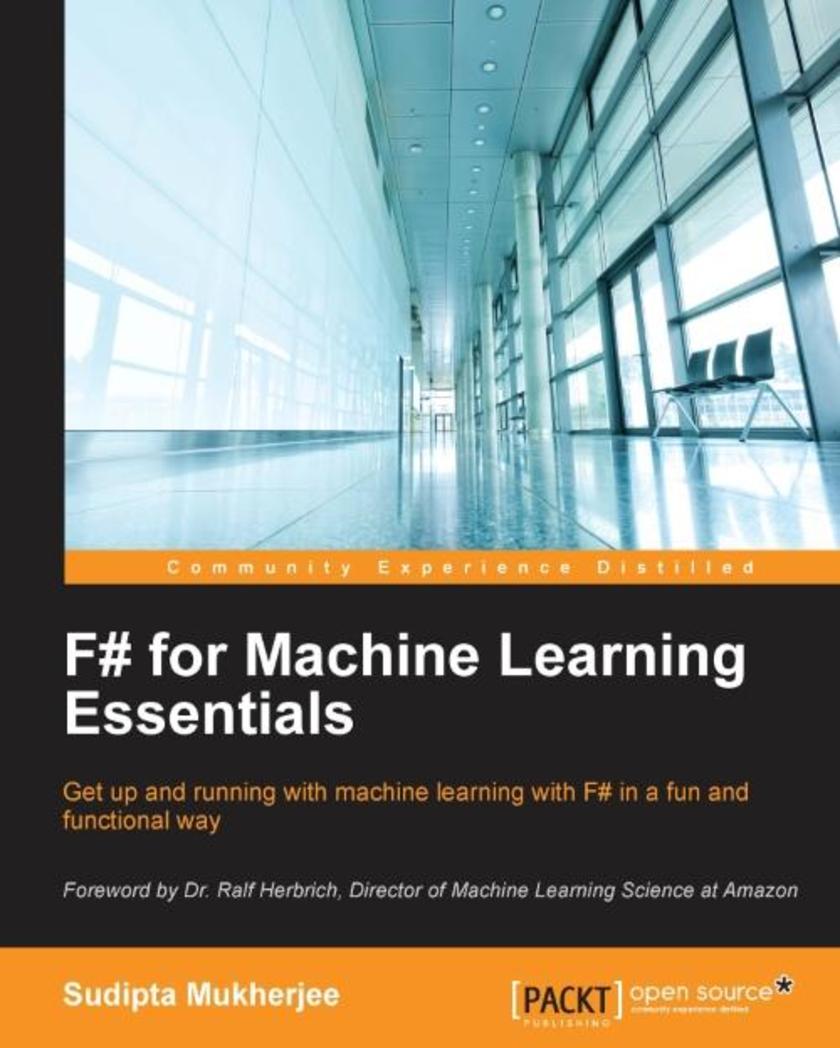
F# for Machine Learning Essentials
¥71.93
Get up and running with machine learning with F# in a fun and functional wayAbout This BookDesign algorithms in F# to tackle complex computing problemsBe a proficient F# data scientist using this simple-to-follow guideSolve real-world, data-related problems with robust statistical models, built for a range of datasetsWho This Book Is ForIf you are a C# or an F# developer who now wants to explore the area of machine learning, then this book is for you. Familiarity with theoretical concepts and notation of mathematics and statistics would be an added advantage.What You Will LearnUse F# to find patterns through raw dataBuild a set of classification systems using Accord.NET, Weka, and F#Run machine learning jobs on the Cloud with MBracePerform mathematical operations on matrices and vectors using Math.NETUse a recommender system for your own problem domainIdentify tourist spots across the globe using inputs from the user with decision tree algorithmsIn DetailThe F# functional programming language enables developers to write simple code to solve complex problems. With F#, developers create consistent and predictable programs that are easier to test and reuse, simpler to parallelize, and are less prone to bugs.If you want to learn how to use F# to build machine learning systems, then this is the book you want.Starting with an introduction to the several categories on machine learning, you will quickly learn to implement time-tested, supervised learning algorithms. You will gradually move on to solving problems on predicting housing pricing using Regression Analysis. You will then learn to use Accord.NET to implement SVM techniques and clustering. You will also learn to build a recommender system for your e-commerce site from scratch. Finally, you will dive into advanced topics such as implementing neural network algorithms while performing sentiment analysis on your data.Style and approachThis book is a fast-paced tutorial guide that uses hands-on examples to explain real-world applications of machine learning. Using practical examples, the book will explore several machine learning techniques and also describe how you can use F# to build machine learning systems.
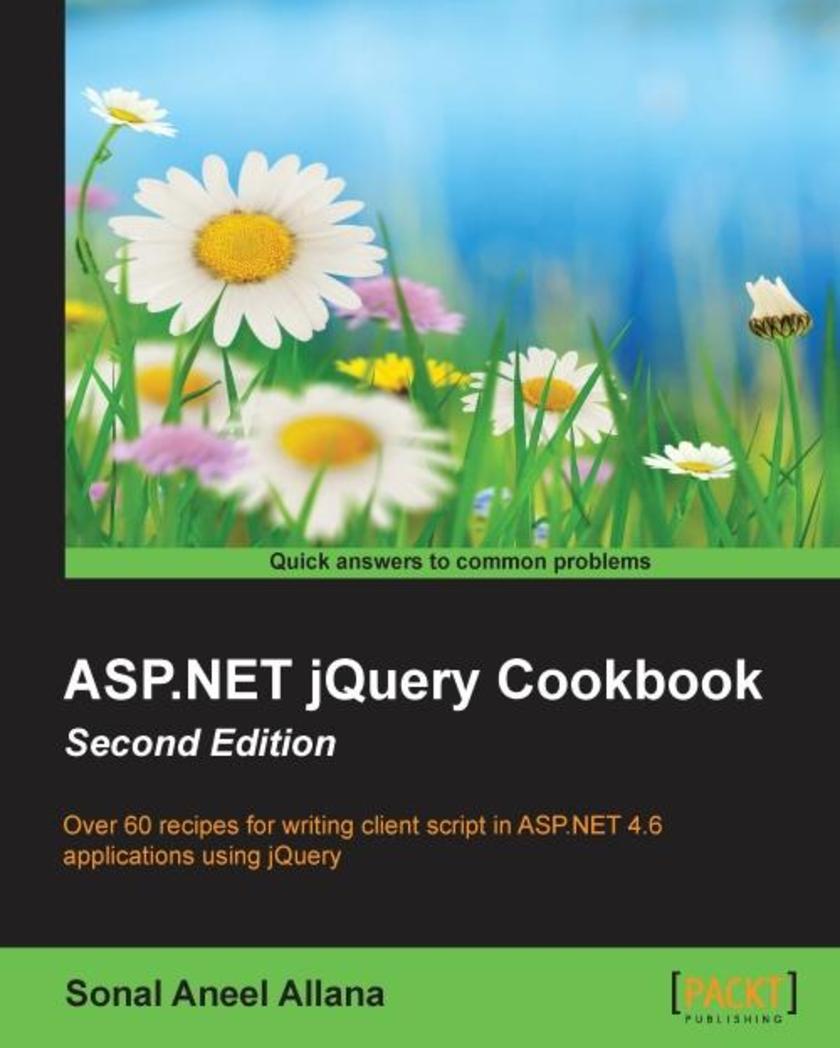
ASP.NET jQuery Cookbook - Second Edition
¥99.18
Over 60 recipes for writing client * in ASP.NET 4.6 applications using jQueryAbout This BookThis is a step-by-step guide to solve common problems in ASP.NET applicationsEasy-to-follow recipes to write client *s effortlessly and quicklyA hands-on approach that will show you how to interface jQuery with ASP.NET websites and MVCWho This Book Is ForThis book is for ASP.NET developers who want to use jQuery to write client *s for cross-browser compatibility. The book assumes no prior knowledge of ASP.NET or jQuery, and every recipe is self-contained and explained in an easy-to-follow manner. Familiarity with Visual Studio and MS SQL Server is preferred, but not compulsory.What You Will LearnDownload and include jQuery in ASP.NET websites and MVCUse jQuery selectors with ASP.NET server controlsGet to know about event handling and DOM traversalDeploy jQuery for visual effects and animationsDevelop AJAX-enabled ASP.NET applicationsCreate your own pluginsSolve common problems using less code and cut down your development timeIn DetailjQuery is a lightweight JavaScript library that has changed the landscape of client *ing in web applications. Developed by John Resig in 2006, it has taken the web by storm because of its cross-browser compatibility and the ability to get more done with less code. It has gained popularity with ASP.NET developers and is now distributed with Visual Studio and the NuGet package manager.ASP.NET jQuery Cookbook explores the wide range of utilities that the jQuery library provides. It teaches you the nitty-gritty of plugging in these features in ASP.NET web applications. It covers every aspect of interfacing the library, right from downloading and including jQuery on web pages to selecting controls, handling events, and creating animations. This book also walks you through DOM traversal and manipulation in ASP.NET and then through visual effects and graphics in ASP.NET sites. It explores advanced features such as posting AJAX requests and writing plugins. It will provide you with all the information you need to use this library confidently with ASP.NET.Style and approachThis book takes a hands-on, pragmatic approach to solving common problems in ASP.NET applications using jQuery. Every recipe has detailed steps with screen captures and code snippets. The necessary theoretical concepts are introduced as and when needed.
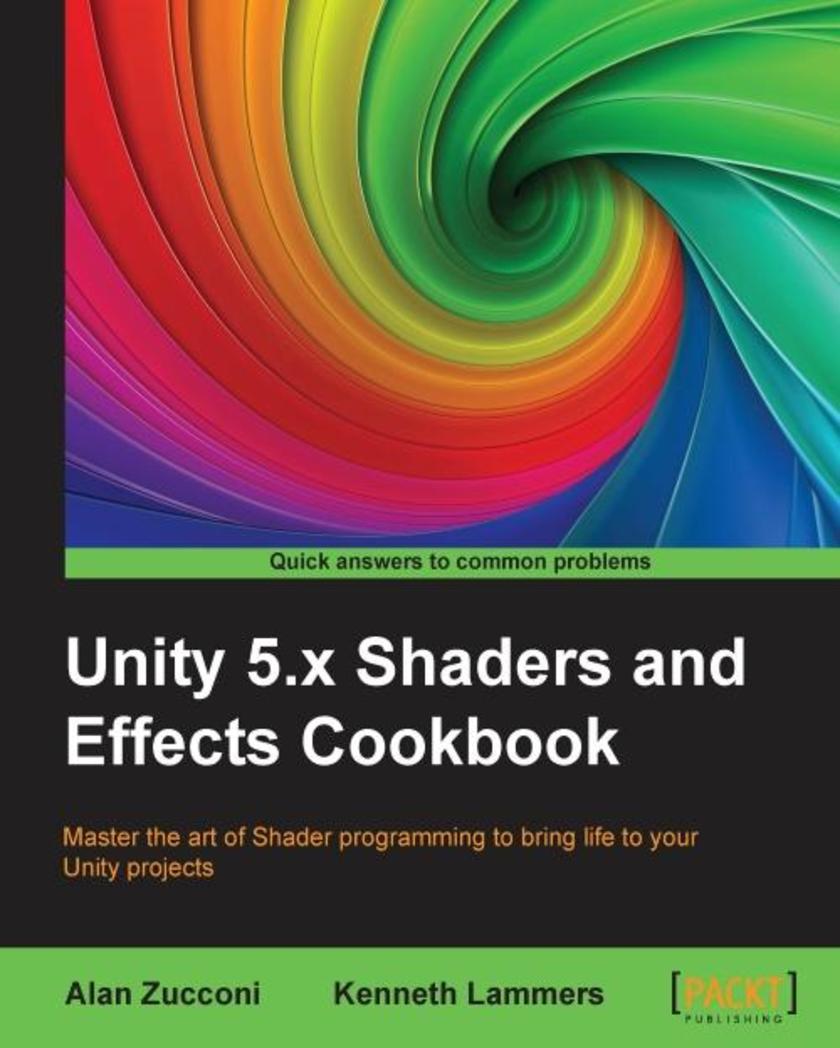
Unity 5.x Shaders and Effects Cookbook
¥90.46
Master the art of Shader programming to bring life to your Unity projectsAbout This BookThis book will help you master the technique of physically based shading in Unity 5 to add realism to your game quickly through precise recipesFrom an eminent author, this book offers you the fine technicalities of professional post-processing effects for stunning resultsThis book will help you master Shader programming through easy-to-follow examples to create stunning visual effects that can be used in 3D games and high quality graphics.Who This Book Is ForUnity Effects and Shader Cookbook is written for developers who want to create their first Shaders in Unity 5 or wish to take their game to a whole new level by adding professional post-processing effects. A solid understanding of Unity is required.What You Will LearnUnderstand physically based rendering to fit the aesthetic of your gameEnter the world of post-processing effects to make your game look visually stunningAdd life to your materials, complementing Shader programming with interactive *sDesign efficient Shaders for mobile platforms without sacrificing their realismUse state-of-the-art techniques such as volumetric explosions and fur shadingBuild your knowledge by understanding how Shader models have evolved and how you can create your ownDiscover what goes into the structure of Shaders and why lighting works the way it doesMaster the math and algorithms behind the most used lighting modelsIn DetailSince their introduction to Unity, Shaders have been notoriously difficult to understand and implement in games: complex mathematics have always stood in the way of creating your own Shaders and attaining that level of realism you crave. With Shaders, you can transform your game into a highly polished, refined product with Unity’s post-processing effects.Unity Shaders and Effects Cookbook is the first of its kind to bring you the secrets of creating Shaders for Unity3D—guiding you through the process of understanding vectors, how lighting is constructed with them, and also how textures are used to create complex effects without the heavy math.We’ll start with essential lighting and finishing up by creating stunning screen Effects just like those in high quality 3D and mobile games. You’ll discover techniques including normal mapping, image-based lighting, and how to animate your models inside a Shader. We’ll explore the secrets behind some of the most powerful techniques, such as physically based rendering! With Unity Shaders and Effects Cookbook, what seems like a dark art today will be second nature by tomorrow.Style and approachThe recipes in this book contain step-by-step instructions, complemented by screenshots and code, and real-world examples.
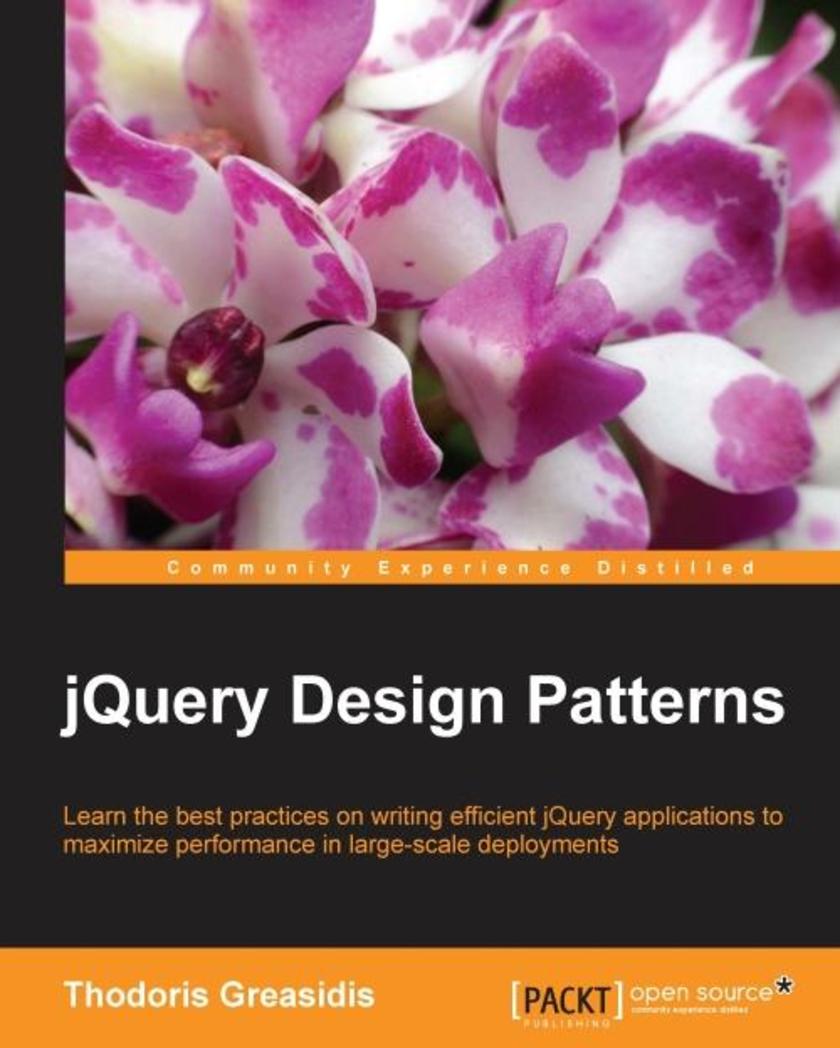
jQuery Design Patterns
¥71.93
Learn the best practices on writing efficient jQuery applications to maximize performance in large-scale deploymentsAbout This BookLearn about the observer pattern and the deferred observer pattern, two of the most popular design patterns that handle custom eventsAdvance your jQuery skills by learning about patterns such as divide and conquer, facade, and builder and factory to handle complex resultsThis step-by-step guide to applying micro-patterns and optimizing jQuery applications will help you get the best performance in a production environmentWho This Book Is ForThis book is for existing jQuery Developers or new developers who want to get an understanding of the “correct way” to build jQuery applications, using best practices and industry standard patterns.What You Will LearnRespond to user actionsAchieve greater flexibility and code decouplingHave a central point for emitting and receiving application level eventsStructure the application into small independent modulesAbstract complex APIsIsolate the procedure of generating complex parts of the applicationEfficiently orchestrate asynchronous procedures using jQuery Deferred and PromisesUtilize the most widely-used client-side templating libraries for more complex use casesIn DetailjQuery is a feature-rich JavaScript library that makes HTML document traversal and manipulation, event handling, animation, and Ajax much simpler with an easy-to-use API that works across a variety of browsers. With a combination of versatility and extensibility, jQuery has changed the way that millions of people write JavaScript.jQuery solves the problems of DOM manipulation, event detection, AJAX calls, element selection and document queries, element attribute and data management, as well as object management utilities. This book addresses these problems and shows you how to make the best of jQuery through the various design patterns available.The book starts off with a refresher to jQuery and will then take you through the different design patterns such as facade, observer, publisher/subscriber, and so on. We will also go into client-side templating techniques and libraries, as well as some plugin development patterns. Finally, we will look into some best practices that you can use to make the best of jQuery.Style and approachThe example-oriented guide covers the best and most widely used patterns to help you improve your development with jQuery.
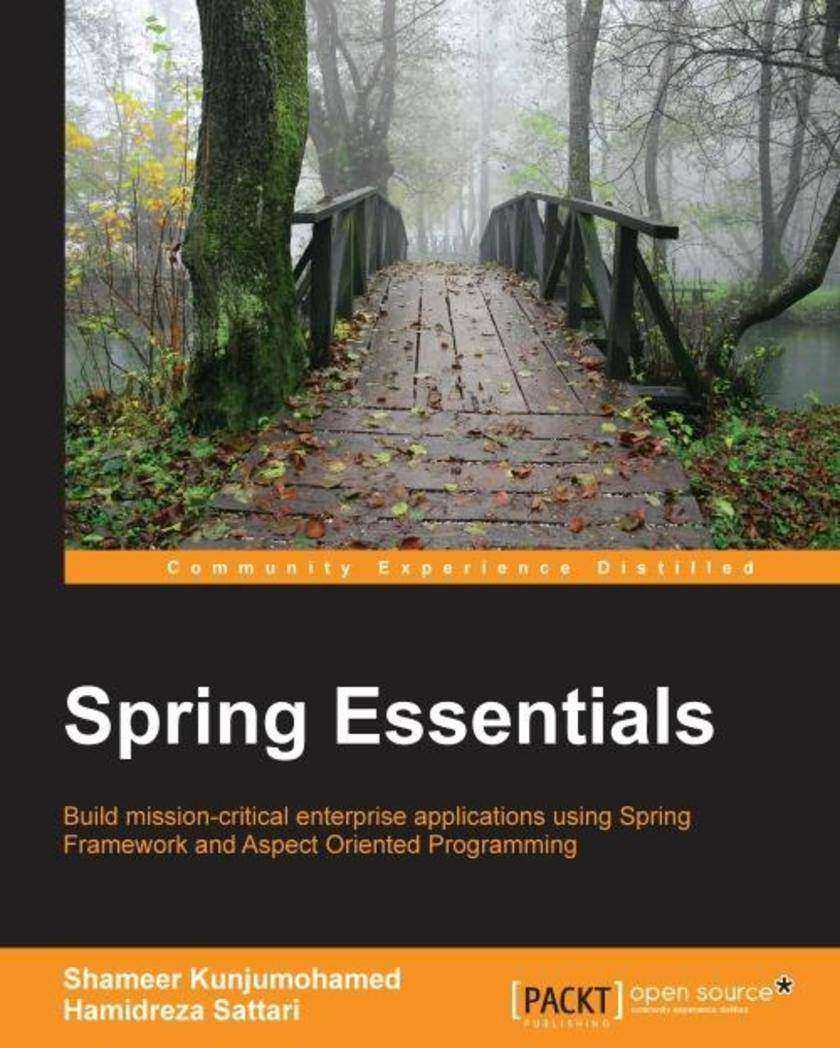
Spring Essentials
¥80.65
Build mission-critical enterprise applications using Spring Framework and Aspect Oriented ProgrammingAbout This BookStep into more advanced features of aspect-oriented programming and API components to build enterprise grade systemsBuild lightning-fast web applications and REST APIs using Spring MVC and its asynchronous processing capabilities with the view technologies of your choiceExplore simplified but powerful data access techniques including JPA (Java Persistence Architecture) repositories and NoSQL data accessWho This Book Is ForIf you are a Java developer who is looking to master Enterprise Java Development using Spring Framework, then this book is ideal for you. Prior understanding of core Java programming and a high-level understanding of Spring Framework is recommended. Having sound knowledge of servlet-based web development in Java and basic Database concepts would be an advantage but not a requirement.What You Will LearnSet up and build standalone and web-based projects using Spring Framework with Maven or GradleGet familiar with JSP Form processing using Spring and Form Tag LibraryDevelop RESTful API applications for XML and JSON data transfers with non-blocking asynchronous capabilitiesExplore Spring’s comprehensive transaction support for declarative Transaction Management and its integration with Spring’s data access abstractionsInvestigate Spring Data access mechanisms with Spring Data Repositories, a simple and consistent data-access abstractionConstruct real-time applications using WebSocket with a SockJS fallback optionUnderstand how to secure your Spring Web and standalone applications using Spring Security declaratively and consistentlyGet to grips with the end-to-end development of an API-based modern SPA using EmberJS at the front end and SpringMVC at the back endIn DetailSpring is an open source Java application development framework to build and deploy systems and applications that run on the JVM. It is the industry standard and the most popular framework among Java developers with over two-thirds of developers using it.Spring Essentials makes learning Spring so much quicker and easier with the help of illustrations and practical examples. Starting from the core concepts of features such as inversion of Control Container and BeanFactory, we move on to a detailed look at aspect-oriented programming. We cover the breadth and depth of Spring MVC, the WebSocket technology, Spring Data, and Spring Security with various authentication and authorization mechanisms.Packed with real-world examples, you’ll get an insight into utilizing the power of Spring Expression Language in your applications for higher maintainability. You’ll also develop full-duplex real-time communication channels using WebSocket and integrate Spring with web technologies such as JSF, Struts 2, and Tapestry. At the tail end, you will build a modern SPA using EmberJS at the front end and a Spring MVC-based API at the back end.By the end of the book, you will be able to develop your own dull-fledged applications with Spring.Style and approachThis book is a practical guide based on logical modules of the whole Spring Framework family, with a start-small approach, increasing in complexity as it progresses. Every chapter is an amalgamation of theory and practical examples, with further discussion on additional features and approaches.
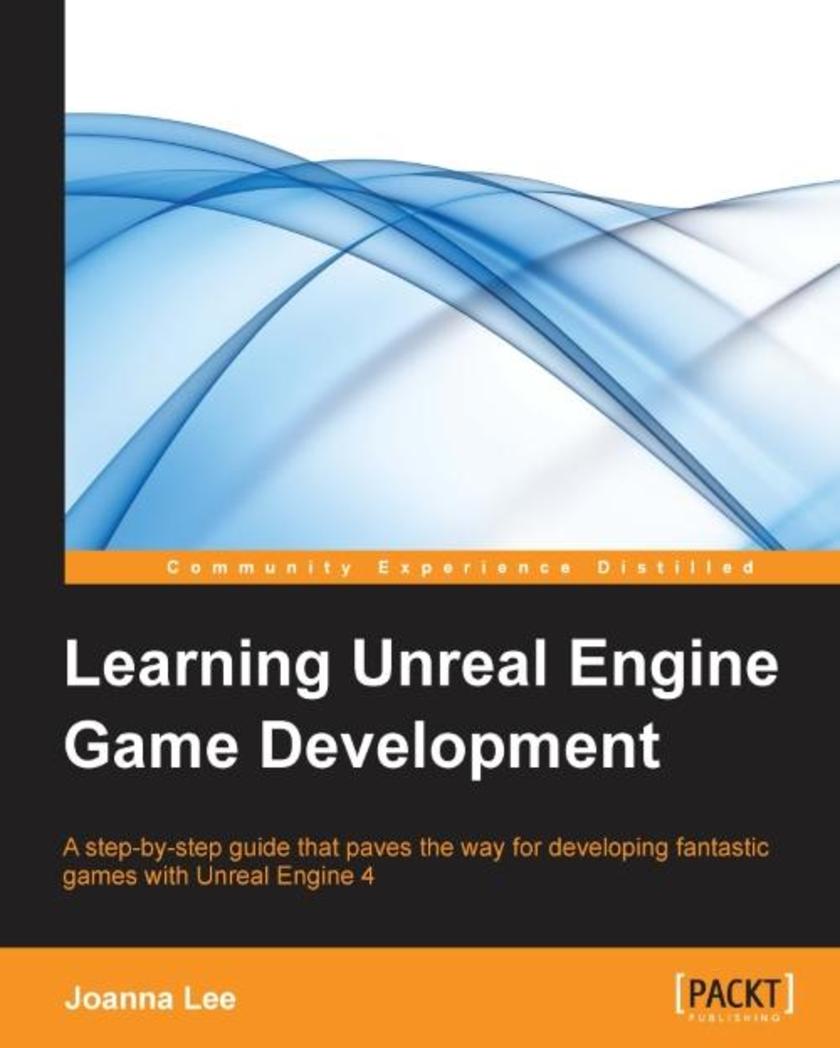
Learning Unreal Engine Game Development
¥80.65
A step-by-step guide that paves the way for developing fantastic games with Unreal Engine 4About This BookLearn about game development and the building blocks that go into creating a gameA simple tutorial for beginners to get acquainted with the Unreal Engine architectureLearn about the features and functionalities of Unreal Engine 4 and how to use them to create your own gamesWho This Book Is ForIf you are new to game development and want to learn how games are created using Unreal Engine 4, this book is the right choice for you. You do not need prior game development experience, but it is expected that you have played games before. Knowledge of C++ would prove to be useful.What You Will LearnLearn what a game engine is, the history of Unreal Engine, and how game studios create gamesExplore the Unreal Engine 4 editor controls and learn how to use the editor to create a room in a game levelUnderstand the basic structures of objects in a game, such as the differences between BSP and static meshesMake objects interactive using level blueprintsLearn more about computer graphics rendering; how materials and light are rendered in your gameGet acquainted with the Material Editor to create materials and use different types of lights in the game levelsUtilize the various editors, tools, and features such as UI, the particle system, audio, terrain manipulation, and cinematics in Unreal Engine 4 to create game levelsIn DetailUnreal Engine 4 is a powerful game development engine that provides rich functionalities to create 2D and 3D games across multiple platforms. Many people know what a game is and they play games every day, but how many of them know how to create a gameUnreal Engine technology powers hundreds of games, and thousands of individuals have built careers and companies around skills developed using this engine.Learning Unreal Engine 4 Game Development starts with small, simple game ideas and playable projects that you can actually finish. The book first teaches you the basics of using Unreal Engine to create a simple game level. Then, you'll learn how to add details such as actors, animation, effects, and so on to the game. The complexity will increase over the chapters and the examples chosen will help you learn a wide variety of game development techniques. This book aims to equip you with the confidence and skills to design and build your own games using Unreal Engine 4. By the end of this book, you'll have learnt about the entire Unreal suite and know how to successfully create fun, simple games.Style and approach This book explains in detail what goes into the development of a game, provides hands-on examples that you can follow to create the different components of a game, and provides sufficient background/theory to equip you with a solid foundation for creating your own games.
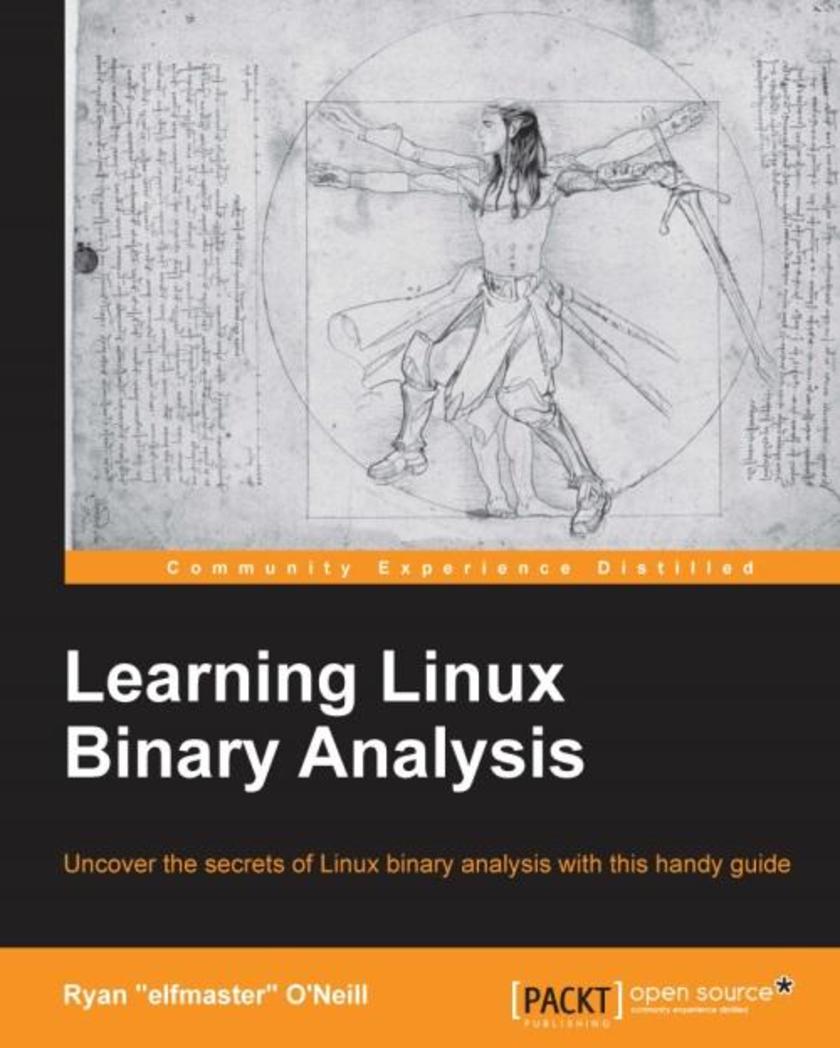
Learning Linux Binary Analysis
¥80.65
Uncover the secrets of Linux binary analysis with this handy guideAbout This BookGrasp the intricacies of the ELF binary format of UNIX and LinuxDesign tools for reverse engineering and binary forensic analysisInsights into UNIX and Linux memory infections, ELF viruses, and binary protection schemesWho This Book Is ForIf you are a software engineer or reverse engineer and want to learn more about Linux binary analysis, this book will provide you with all you need to implement solutions for binary analysis in areas of security, forensics, and antivirus. This book is great for both security enthusiasts and system level engineers. Some experience with the C programming language and the Linux command line is assumed.What You Will LearnExplore the internal workings of the ELF binary formatDiscover techniques for UNIX Virus infection and analysisWork with binary hardening and software anti-tamper methodsPatch executables and process memoryBypass anti-debugging measures used in malwarePerform advanced forensic analysis of binariesDesign ELF-related tools in the C languageLearn to operate on memory with ptraceIn DetailLearning Linux Binary Analysis is packed with knowledge and code that will teach you the inner workings of the ELF format, and the methods used by hackers and security analysts for virus analysis, binary patching, software protection and more.This book will start by taking you through UNIX/Linux object utilities, and will move on to teaching you all about the ELF specimen. You will learn about process tracing, and will explore the different types of Linux and UNIX viruses, and how you can make use of ELF Virus Technology to deal with them.The latter half of the book discusses the usage of Kprobe instrumentation for kernel hacking, code patching, and debugging. You will discover how to detect and disinfect kernel-mode rootkits, and move on to analyze static code. Finally, you will be walked through complex userspace memory infection analysis.This book will lead you into territory that is uncharted even by some experts; right into the world of the computer hacker.Style and approachThe material in this book provides detailed insight into the arcane arts of hacking, coding, reverse engineering Linux executables, and dissecting process memory. In the computer security industry these skills are priceless, and scarce. The tutorials are filled with knowledge gained through first hand experience, and are complemented with frequent examples including source code.
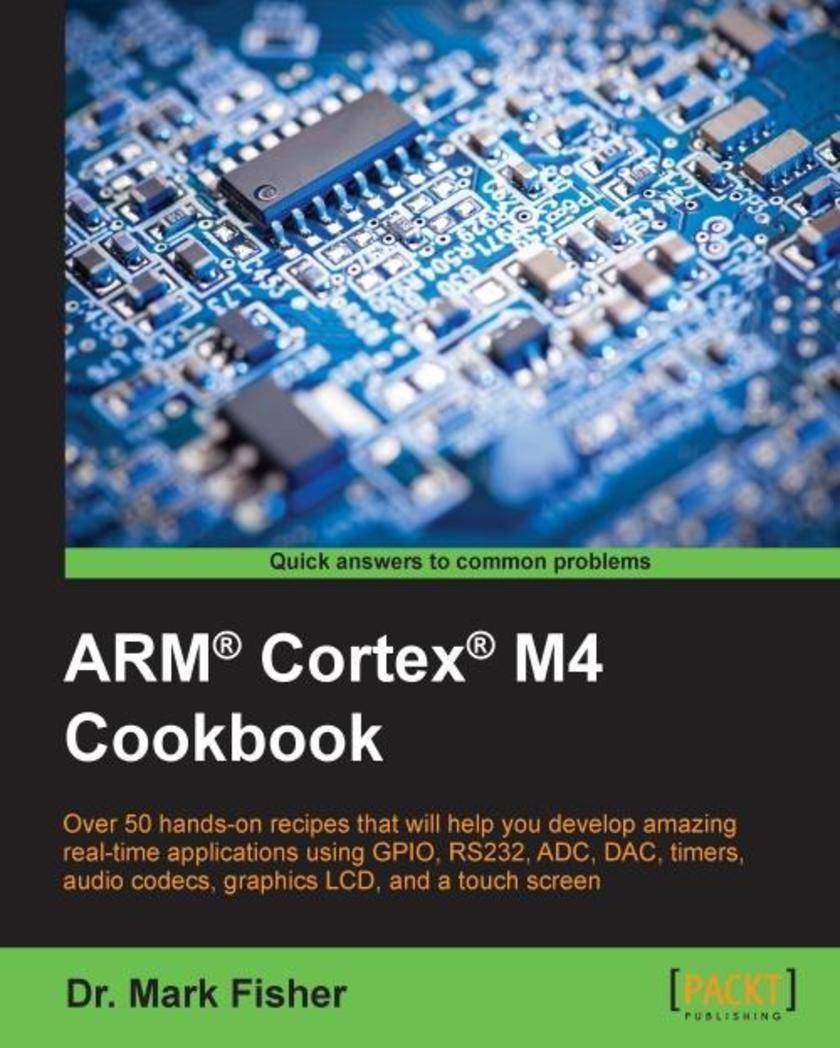
ARM? Cortex? M4 Cookbook
¥99.18
Over 50 hands-on recipes that will help you develop amazing real-time applications using GPIO, RS232, ADC, DAC, timers, audio codecs, graphics LCD, and a touch screen About This Book This book focuses on programming embedded systems using a practical approach Examples show how to use bitmapped graphics and manipulate digital audio to produce amazing games and other multimedia applications The recipes in this book are written using ARM’s MDK Microcontroller Development Kit which is the most comprehensive and accessible development solution Who This Book Is For This book is aimed at those with an interest in designing and programming embedded systems. These could include electrical engineers or computer programmers who want to get started with microcontroller applications using the ARM Cortex-M4 architecture in a short time frame. The book’s recipes can also be used to support students learning embedded programming for the first time. Basic knowledge of programming using a high level language is essential but those familiar with other high level languages such as Python or Java should not have too much difficulty picking up the basics of embedded C programming. What You Will Learn Use ARM’s uVision MDK to configure the microcontroller run time environment (RTE), create projects and compile download and run simple programs on an evaluation board. Use and extend device family packs to configure I/O peripherals. Develop multimedia applications using the touchscreen and audio codec beep generator. Configure the codec to stream digital audio and design digital filters to create amazing audio effects. Write multi-threaded programs using ARM’s real time operating system (RTOS). Write critical sections of code in assembly language and integrate these with functions written in C. Fix problems using ARM’s debugging tool to set breakpoints and examine variables. Port uVision projects to other open source development environments. In Detail Embedded microcontrollers are at the core of many everyday electronic devices. Electronic automotive systems rely on these devices for engine management, anti-lock brakes, in car entertainment, automatic transmission, active suspension, satellite navigation, etc. The so-called internet of things drives the market for such technology, so much so that embedded cores now represent 90% of all processor’s sold. The ARM Cortex-M4 is one of the most powerful microcontrollers on the market and includes a floating point unit (FPU) which enables it to address applications. The ARM Cortex-M4 Microcontroller Cookbook provides a practical introduction to programming an embedded microcontroller architecture. This book attempts to address this through a series of recipes that develop embedded applications targeting the ARM-Cortex M4 device family. The recipes in this book have all been tested using the Keil MCBSTM32F400 board. This board includes a small graphic LCD touchscreen (320x240 pixels) that can be used to create a variety of 2D gaming applications. These motivate a younger audience and are used throughout the book to illustrate particular hardware peripherals and software concepts. C language is used predominantly throughout but one chapter is devoted to recipes involving assembly language. Programs are mostly written using ARM’s free microcontroller development kit (MDK) but for those looking for open source development environments the book also shows how to configure the ARM-GNU toolchain. Some of the recipes described in the book are the basis for laboratories and assignments undertaken by undergraduates. Style and approach The ARM Cortex-M4 Cookbook is a practical guide full of hands-on recipes. It follows a step-by-step approach that allows you to find, utilize and learn ARM concepts quickly.
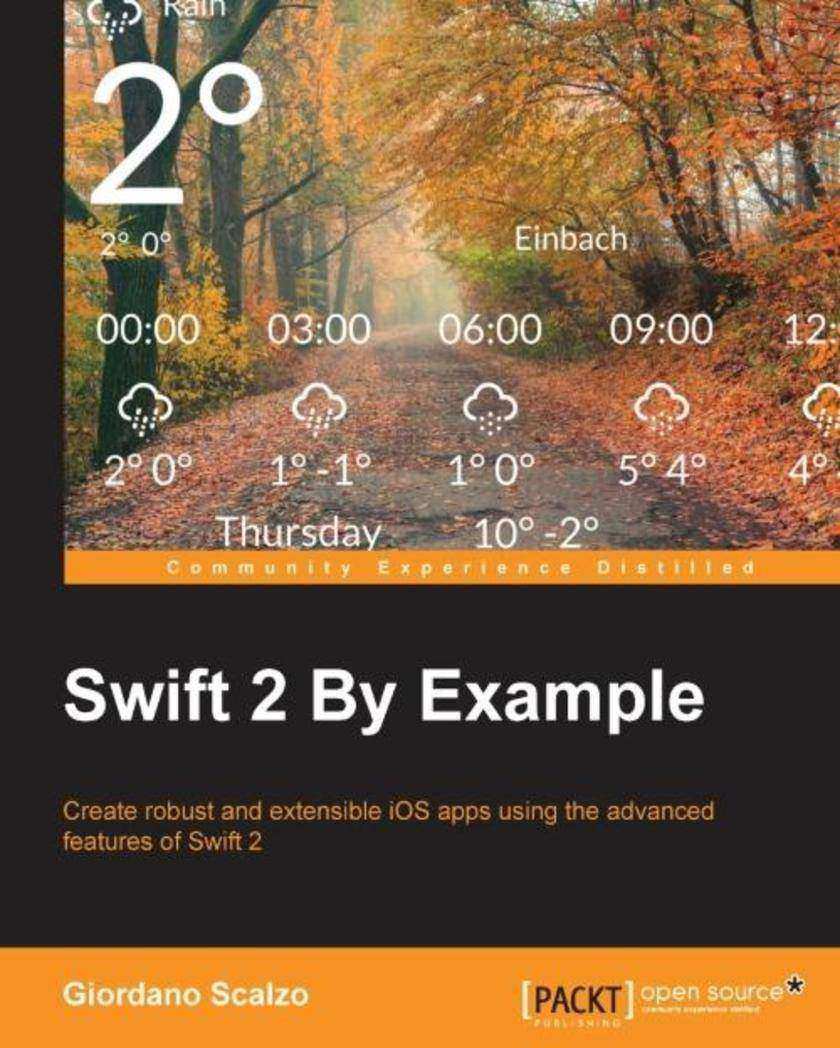
Swift 2 By Example
¥80.65
Create robust and extensible iOS apps using the advanced features of Swift 2 About This Book Get up to speed with the new features of Swift 2 by following the exhaustive examples in this book Specialize in developing real iOS apps, and 2D and 3D videogames using Swift and Cocoapods Learn how to build server API apps to feed your iOS client apps Who This Book Is For This book is ideal for those who want to learn to develop app in Swift, starting the right way. Whether you are an expert Objective-C programmer or are new to this platform, you’ll quickly grasp the code of real world apps, and discover how to use Swift effectively. Prior experience in development for Apple devices would be helpful, but is not mandatory. What You Will Learn Create a server in Swift to deliver JSON data to an iOS app Take advantage of Cocoapods to use third-party libraries Use a clean and effective architecture to decrease complexity and speed up development Take advantage of the most useful parts of the iOS SDK Build games with SpriteKit and SceneKit Develop an app running on the cloud to act as an API server for your client’s apps In Detail Swift is no longer the unripe language it was when launched by Apple at WWDC14, now it’s a powerful and ready-for-production programming language that has empowered most new released apps. Swift is a user-friendly language with a smooth learning curve; it is safe, robust, and really flexible. Swift 2 is more powerful than ever; it introduces new ways to solve old problems, more robust error handling, and a new programming paradigm that favours composition over inheritance. Swift 2 by Example is a fast-paced, practical guide to help you learn how to develop iOS apps using Swift. Through the development of seven different iOS apps and one server app, you’ll find out how to use either the right feature of the language or the right tool to solve a given problem. We begin by introducing you to the latest features of Swift 2, further kick-starting your app development journey by building a guessing game app, followed by a memory game. It doesn’t end there, with a few more apps in store for you: a to-do list, a beautiful weather app, two games: Flappy Swift and Cube Runner, and finally an ecommerce app to top everything off. By the end of the book, you’ll be able to build well-designed apps, effectively use AutoLayout, develop videogames, and build server apps. Style and approach These easy-to-follow tutorials show you how to build real-world apps. The difficulty and complexity level increases chapter by chapter. Each chapter is dedicated to build a new app, beginning from a basic and unstyled app through to a full 3D game. The last two chapters show you how to build a complete client-server ecommerce app right from scratch.
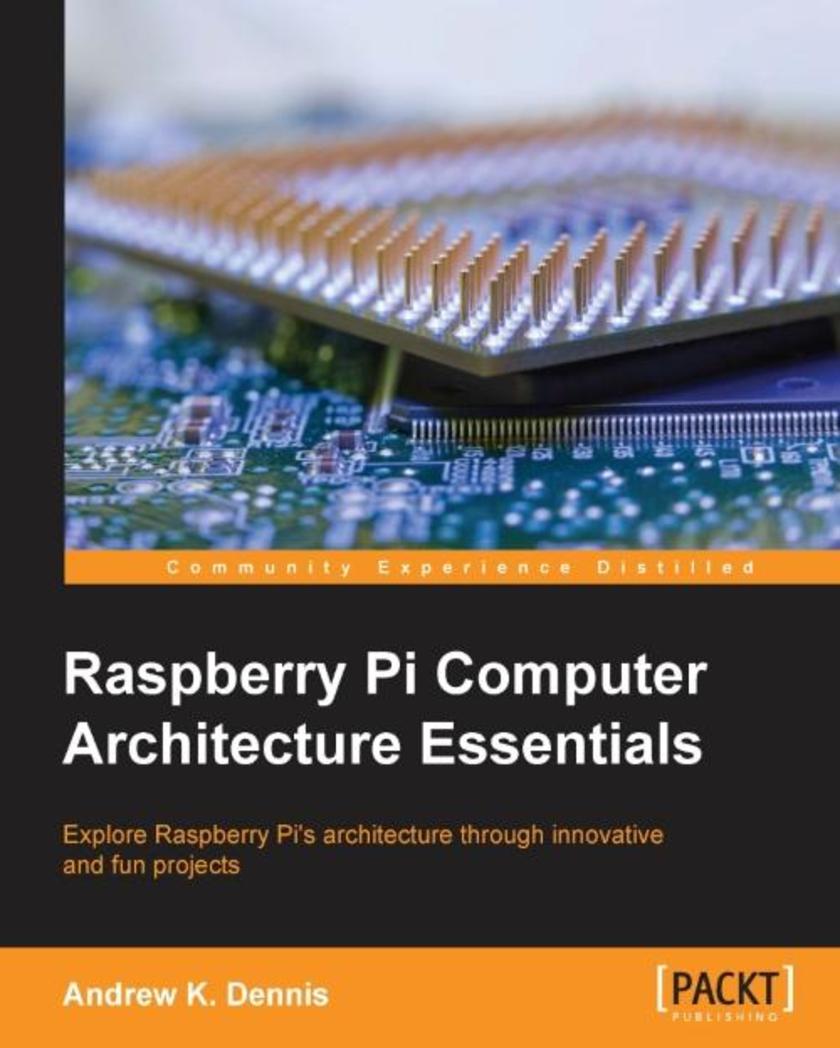
Raspberry Pi Computer Architecture Essentials
¥71.93
Explore Raspberry Pi's architecture through innovative and fun projects About This Book Explore Raspberry Pi 2’s hardware through the Assembly, C/C++, and Python programming languages Experiment with connecting electronics up to your Raspberry Pi 2 and interacting with them through software Learn about the Raspberry Pi 2 architecture and Raspbian operating system through innovative projects Who This Book Is For Raspberry Pi Computer Architecture Essentials is for those who are new and those who are familiar with the Raspberry Pi. Each topic builds upon earlier ones to provide you with a guide to Raspberry Pi’s architecture. From the novice to the expert, there is something for everyone. A basic knowledge of programming and Linux would be helpful but is not required. What You Will Learn Set up your Raspberry Pi 2 and learn about its hardware Write basic programs in Assembly Language to learn about the ARM architecture Use C and C++ to interact with electronic components Find out about the Python language and how to use it to build web applications Interact with third-party microcontrollers Experiment with graphics and audio programming Expand Raspberry Pi 2’s storage mechanism by using external devices Discover Raspberry Pi 2’s GPIO pins and how to interact with them In Detail With the release of the Raspberry Pi 2, a new series of the popular compact computer is available for you to build cheap, exciting projects and learn about programming. In this book, we explore Raspberry Pi 2’s hardware through a number of projects in a variety of programming languages. We will start by exploring the various hardware components in detail, which will provide a base for the programming projects and guide you through setting up the tools for Assembler, C/C++, and Python. We will then learn how to write multi-threaded applications and Raspberry Pi 2’s multi-core processor. Moving on, you’ll get hands on by expanding the storage options of the Raspberry Pi beyond the SD card and interacting with the graphics hardware. Furthermore, you will be introduced to the basics of sound programming while expanding upon your knowledge of Python to build a web server. Finally, you will learn to interact with the third-party microcontrollers. From writing your first Assembly Language application to programming graphics, this title guides you through the essentials. Style and approach This book takes a step-by-step approach to exploring Raspberry Pi’s architecture through projects that build upon each other. Each project provides you with new information on how to interact with an aspect of the Raspberry Pi and Raspbian operating system, providing a well-rounded guide.
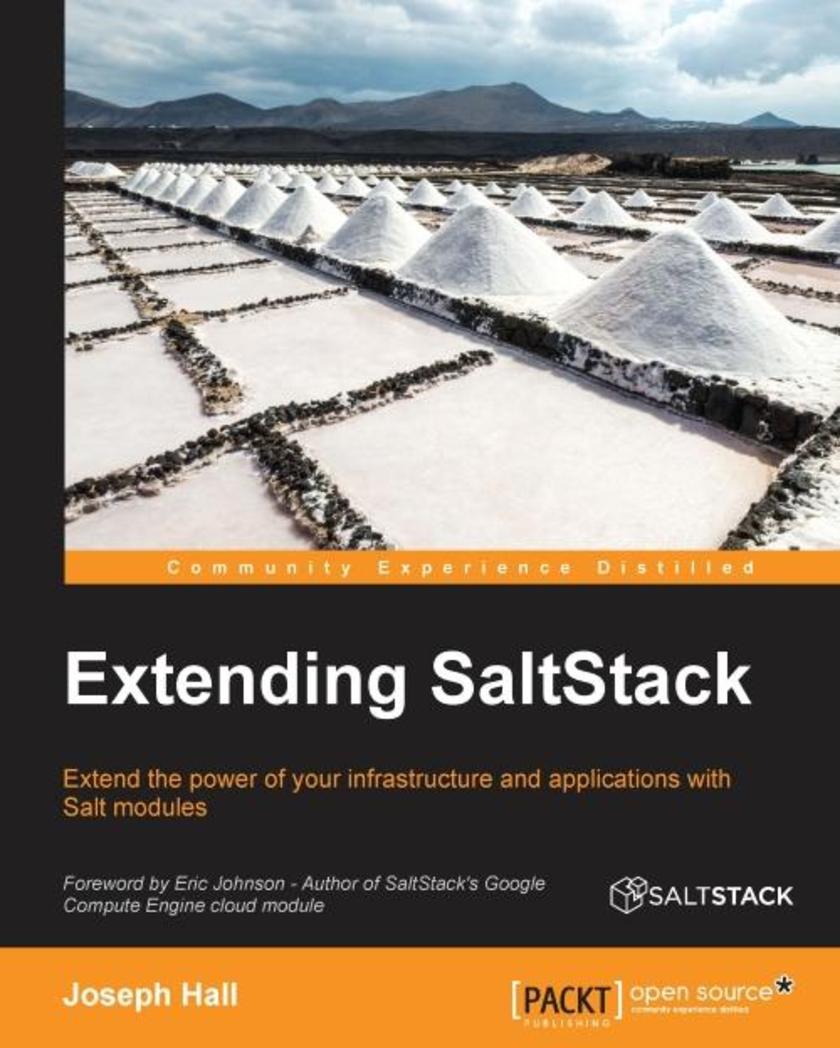
Extending SaltStack
¥80.65
Extend the power of your infrastructure and applications with Salt modules About This Book Get the most up-to-date practical resource on writing new Salt modules and extending Salt Learn through use cases and encounter both commonly-used modules as well as advanced ones Effectively troubleshoot problems and hiccups encountered while building and putting modules to work Who This Book Is For This book is for both new and existing Salt developers who are looking to build and write new Salt modules. Some prior Python development experience is expected. What You Will Learn Understand the working of Salt's Loader system Write several of the most common types of Salt modules Interact between different kinds of modules and build new ones Submit open source modules upstream to the Salt project Make Salt interact with third-party services and applications In Detail Salt already ships with a very powerful set of tools, but that doesn't mean that they all suit your needs perfectly. By adding your own modules and enhancing existing ones, you can bring the functionality that you need to increase your productivity. Extending SaltStack follows a tutorial-based approach to explain different types of modules, from fundamentals to complete and full-functioning modules. Starting with the Loader system that drives Salt, this book will guide you through the most common types of modules. First you will learn how to write execution modules. Then you will extend the configuration using the grain, pillar, and SDB modules. Next up will be state modules and then the renderers that can be used with them. This will be followed with returner and output modules, which increase your options to manage return data. After that, there will be modules for external file servers, clouds, beacons, and finally external authentication and wheel modules to manage the master. With this guide in hand, you will be prepared to create, troubleshoot, and manage the most common types of Salt modules and take your infrastructure to new heights! Style and approach This book follows a step-by-step tutorial-based approach explaining the different types of modules, from fundamentals to complete and full-functioning modules.
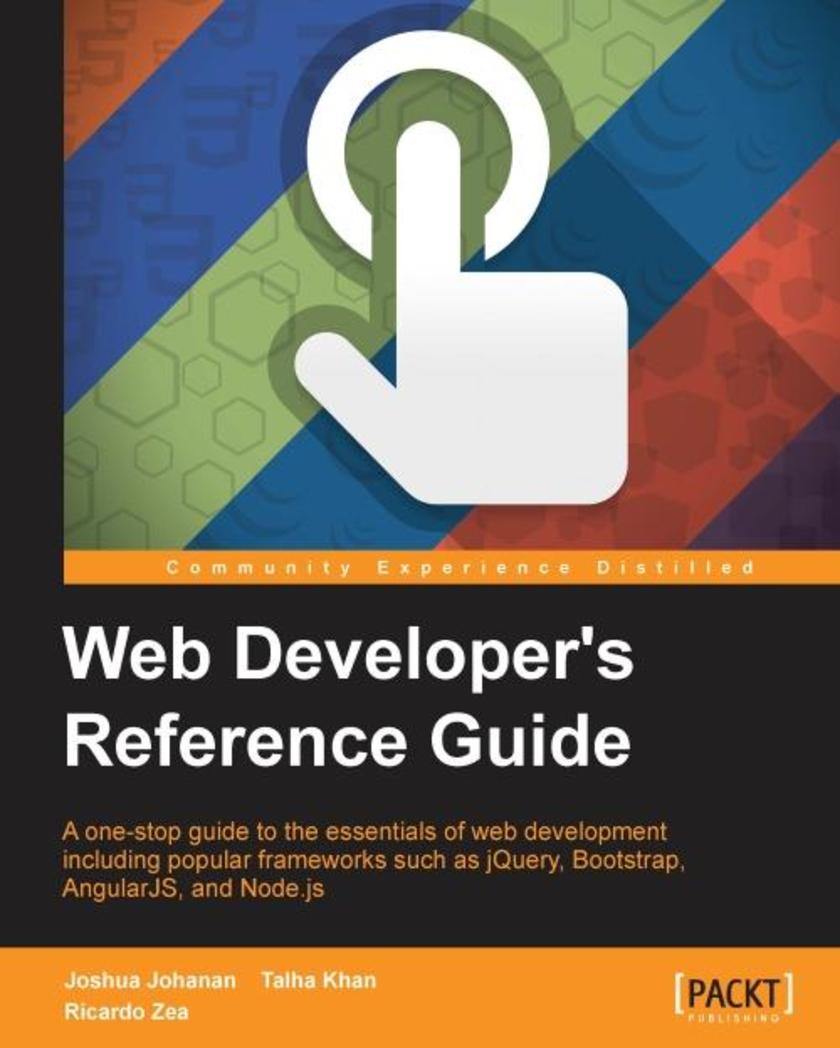
Web Developer's Reference Guide
¥80.65
A one-stop guide to the essentials of web development including popular frameworks such as jQuery, Bootstrap, AngularJS, and Node.js About This Book Understand the essential elements of HTML, CSS, and JavaScript, including how and when to use them Walk through three of the best and most popular web development frameworks – jQuery, Bootstrap, and AngularJS References for any function you will need in your day-to-day web development Who This Book Is For This book is perfect for beginners but more advanced web developers will also benefit. Laid out so you can refer to as much or as little as you need to, with this book you can exhaustively explore essential concepts for modern web developers. What You Will Learn Explore detailed explanations of all the major HTML elements and attributes, illustrated with examples Take a deep dive into CSS properties and functions and master their usage Find clear, concise de*ions of JavaScript syntax and expressions Recognize various JavaScript design patterns and learn the basics of JavaScript object-orientated programming Implement the latest ECMAScript 6 for client-side *ing in your web applications Discover new ways to develop your website's front end quickly and easily using Bootstrap Write JavaScript extensibly using jQuery-JavaScript's feature-rich library Delve into the key Node.js modules used in JavaScript server-side programming Access AngularJS 's important modules, controllers, directives, and services quickly In Detail This comprehensive reference guide takes you through each topic in web development and highlights the most popular and important elements of each area. Starting with HTML, you will learn key elements and attributes and how they relate to each other. Next, you will explore CSS pseudo-classes and pseudo-elements, followed by CSS properties and functions. This will introduce you to many powerful and new selectors. You will then move on to JavaScript. This section will not just introduce functions, but will provide you with an entire reference for the language and paradigms. You will discover more about three of the most popular frameworks today—Bootstrap, which builds on CSS, jQuery which builds on JavaScript, and AngularJS, which also builds on JavaScript. Finally, you will take a walk-through Node.js, which is a server-side framework that allows you to write programs in JavaScript. Style and approach This book is an easy-to-follow, comprehensive reference guide. Each topic, function, or element is listed methodically along with parameters, return values, and de*ions. Examples are also included to help you put the concepts to use quickly in the real world.
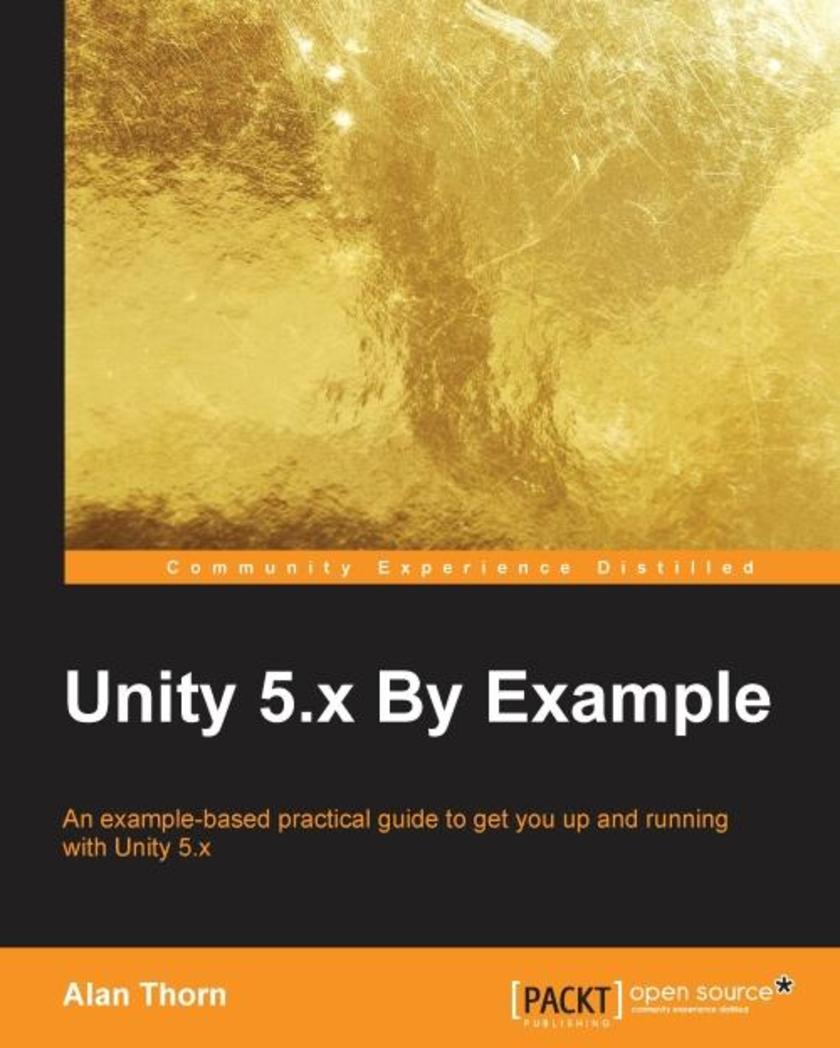
Unity 5.x By Example
¥90.46
An example-based practical guide to get you up and running with Unity 5.x About This Book The most updated resource on Unity 5.x with comprehensive discussion on all the new features of Unity 5.x Understand the core concepts surrounding Unity5 game development with this power-packed hands-on guide Brush up your existing game development skills and create games that have a brilliant gameplay using the excellent examples from this book Who This Book Is For The ideal target audience for this book would be game developers. They need not have previous experience with Unity since this book will cover all the basics about game development with unity. This would also be a very good resource for Unity developers who want to brush up their basic Unity skills and also get up and running with creating interesting games with Unity 5.x. What You Will Learn Understand core Unity concepts, such as game objects, components, and scenes Learn level design techniques for building immersive and interesting worlds Learn to make functional games with C# *ing Use the toolset creatively to build games of different themes and styles Learn to handle player controls and input functionality Dive into the process of working with terrains and world-creation tools Import custom content into Unity from third-party tools, such as Maya and Blender Get to grips with making both 2D and 3D games In Detail Unity is an exciting and popular engine in the game industry. Throughout this book, you’ll learn how to use Unity by making four fun game projects, from shooters and platformers to exploration and adventure games. Unity 5 By Example is an easy-to-follow guide for quickly learning how to use Unity in practical context, step by step, by making real-world game projects. Even if you have no previous experience of Unity, this book will help you understand the toolset in depth. You'll learn how to create a time-critical collection game, a twin-stick space shooter, a platformer, and an action-fest game with intelligent enemies. In clear and accessible prose, this book will present you with step-by-step tutorials for making four interesting games in Unity 5 and explain all the fundamental concepts along the way. Starting from the ground up and moving toward an intermediate level, this book will help you establish a strong foundation in making games with Unity 5. Style and approach This book would be a very unique resource for any game developer who wants to get up and running with Unity. The unique example based approach will take you through the most basic games towards the more complex ones and will gradually build your skill level.
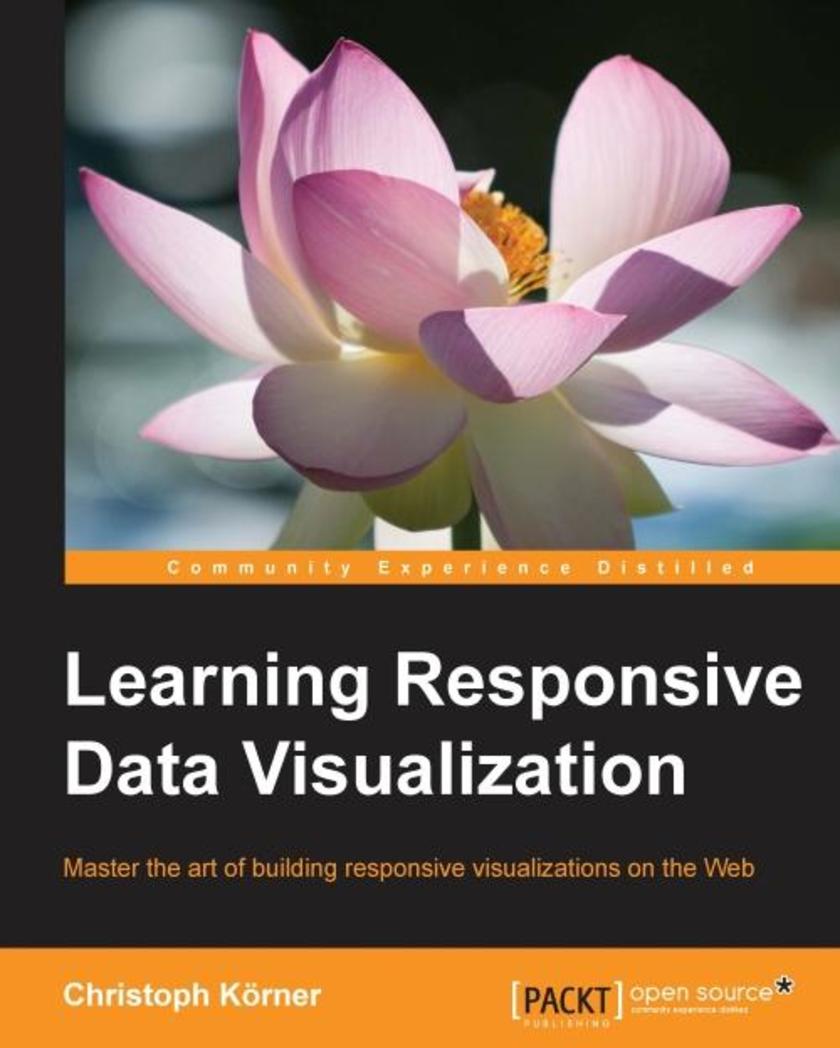
Learning Responsive Data Visualization
¥80.65
Master the art of building responsive visualizations on the Web About This Book Learn the techniques for building data visualizations that work well for all screen sizes Implement responsive techniques with popular libraries to get to grips with building responsive visualizations that work in the real world Incorporate responsive workflow in your data visualization process to build visualizations that take a mobile-first approach. Who This Book Is For Web developers and data science professionals who want to make their visualizations work for smaller screen sizes. Some basic knowledge of JavaScript and Data visualization is expected. What You Will Learn Get familiar with responsive design for data visualizations Understand the main concepts of D3.js to create interactive visualizations Unleash the power of Bootstrap to create stunning and responsive visualizations for all screen resolutions Implement Touch and Mouse interactions for mobile-first applications Design Transitions and Animations that impress in portrait and landscape Build a Responsive World Map using GeoJSON and D3.js In Detail Using D3.js and Responsive Design principles, you will not just be able to implement visualizations that look and feel awesome across all devices and screen resolutions, but you will also boost your productivity and reduce development time by making use of Bootstrap—the most popular framework for developing responsive web applications. This book teaches the basics of scalable vector graphics (SVG), D3.js, and Bootstrap while focusing on Responsive Design as well as mobile-first visualizations; the reader will start by discovering Bootstrap and how it can be used for creating responsive applications, and then implement a basic bar chart in D3.js. You will learn about loading, parsing, and filtering data in JavaScript and then dive into creating a responsive visualization by using Media Queries, responsive interactions for Mobile and Desktop devices, and transitions to bring the visualization to life. In the following chapters, we build a fully responsive interactive map to display geographic data using GeoJSON and set up integration testing with Protractor to test the application across real devices using a mobile API gateway such as AWS Device Farm. You will finish the journey by discovering the caveats of mobile-first applications and learn how to master cross-browser complications. Style and approach As the world shifts to mobile devices for consuming data on the Web, developers are faced with the unique challenge of making data visualizations work for their smaller screens. The growth of responsive web design enabled developers to adopt page layouts and media for smaller screens, but there is still little information available on how to adapt data visualizations for the smaller screens. This book fills this important gap and shows how responsive web design principles can be extended to create visualizations that work well regardless of the screen size, thereby allowing developers to build user-friendly visualizations that work well on all devices. In addition to covering some of the popular techniques and design patterns for building responsive visualizations, the book also shows readers how to implement these techniques with the help of some popular tools and libraries.
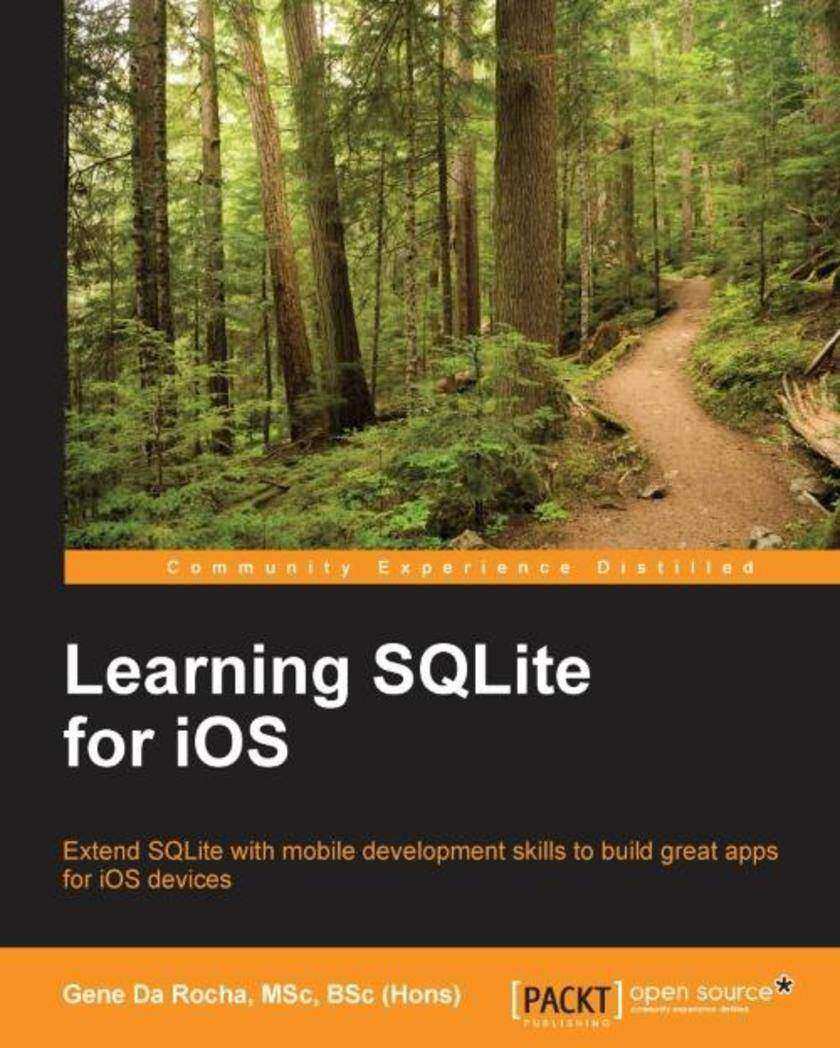
Learning SQLite for iOS
¥54.49
Extend SQLite with mobile development skills to build great apps for iOS devices About This Book Implement Swift code using SQLite statements Learn the background to SQL and SQLite for mobile development, its statements, and command features through practical examples Extend the standard SQLite functionality and increase your software creation portfolio Who This Book Is For This book is intended for those who want to learn about SQLite and how to develop apps in Swift or HTML5 using SQLite. Whether you are an expert Objective-C programmer or new to this platform, you'll learn quickly, grasping the code in real-world apps to use Swift. What You Will Learn Explore Swift's basic language statements Connect to SQLite and execute SQL statements Extend the SQLite language to create your own software extensions Use HTML5 with Phonegap on iOS Set up a Swift project using XCode with SQLite Administer SQLite databases in an easy and effective way In Detail The ability to use SQLite with iOS provides a great opportunity to build amazing apps. Apple's iOS SDK provides native support for SQLite databases. This combination offers the potential to create powerful, data-persistent applications. This book starts with the architecture of SQLite database and introduces you to concepts in SQL . You will find yourself equipped to design your own database system, administer it, and maintain it. Further, you will learn how to operate your SQLite databases smoothly using SQL commands. You will be able to extend the functionality of SQLite by using its vast arsenal of C API calls to build some interesting, exciting, new, and intelligent data-driven applications. Understand how Xcode, HTML5, and Phonegap can be used to build a cross-platform modern app which can benefit from all these technologies - all through creating a complete, customizable application skeleton that you can build on for your own apps. Style and approach This book is a practical and comprehensive guide to developing applications using SQLite and iOS.
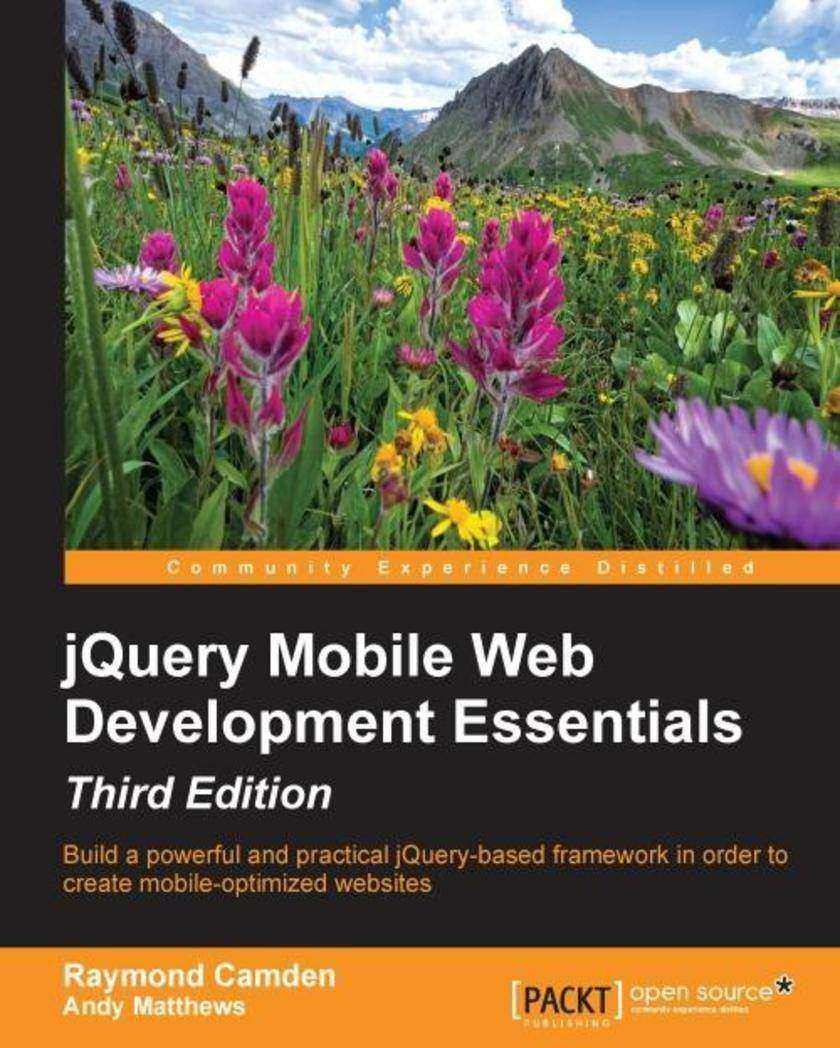
jQuery Mobile Web Development Essentials - Third Edition
¥80.65
Build a powerful and practical jQuery-based framework in order to create mobile-optimized websites About This Book Build websites with jQuery Mobile that work beautifully across a wide range of mobile devices Become a competent jQuery Mobile developer and learn the building blocks of jQuery Mobile’s component-driven design This book covers key concepts but with a focus on providing the practical skills required Who This Book Is For This book is for any web developer who is looking to create mobile-optimized websites. Basic knowledge of HTML is required. Minor familiarity with JavaScript would help but is not required. What You Will Learn Create mobile-optimized sites using simple HTML Structure your sites so users can browse them on mobile devices Find out how to work with multiple pages in the JQM framework and embed multiple pages in HTML files Enhance simple pages using various toolbars Include mobile-optimized forms for interactive sites Convert desktop sites into mobile versions Use HTML5’s local storage feature in jQuery Mobile to include persistent client-side storage Explore the rich sets of widgets and themes available and discover how to modify them for use in your jQuery Mobile site In Detail jQuery Mobile is a HTML5-based touch-optimized web framework. jQuery Mobile can be used to build responsive cross-platform websites and apps for a wide range of smartphones, tablets, and desktop devices. The jQuery Mobile framework can be integrated with other mobile app frameworks such as PhoneGap, IBM Worklight, and more. Introduction to jQuery Mobile explains how to add the framework to your HTML pages to create rich, mobile-optimized web pages with minimal effort. You’ll learn how to use jQuery Mobile’s automatic enhancements and configure the framework for customized, powerful mobile-friendly websites. We then dig into forms, events, and styling. You'll see how jQuery Mobile automatically enhances content, and will find out how to use the JavaScript API to build complex sites. We’ll introduce you to how jQuery Mobile can be themed as well looking into how JavaScript can be used for deep sets of customizations. The examples are ready to run and can be used to help kick-start your own site. Along the way, you will leverage all the concepts you learn to build three sample mobile applications. Style and approach Through a set of easy to follow instructions, we’ll show you how to use jQuery Mobile’s features one easy-to-use widget at a time. You’ll see examples for each feature as well as screenshots to demonstrate what they should look like on a mobile device. You can then take these example files and modify them as you learn to experiment.
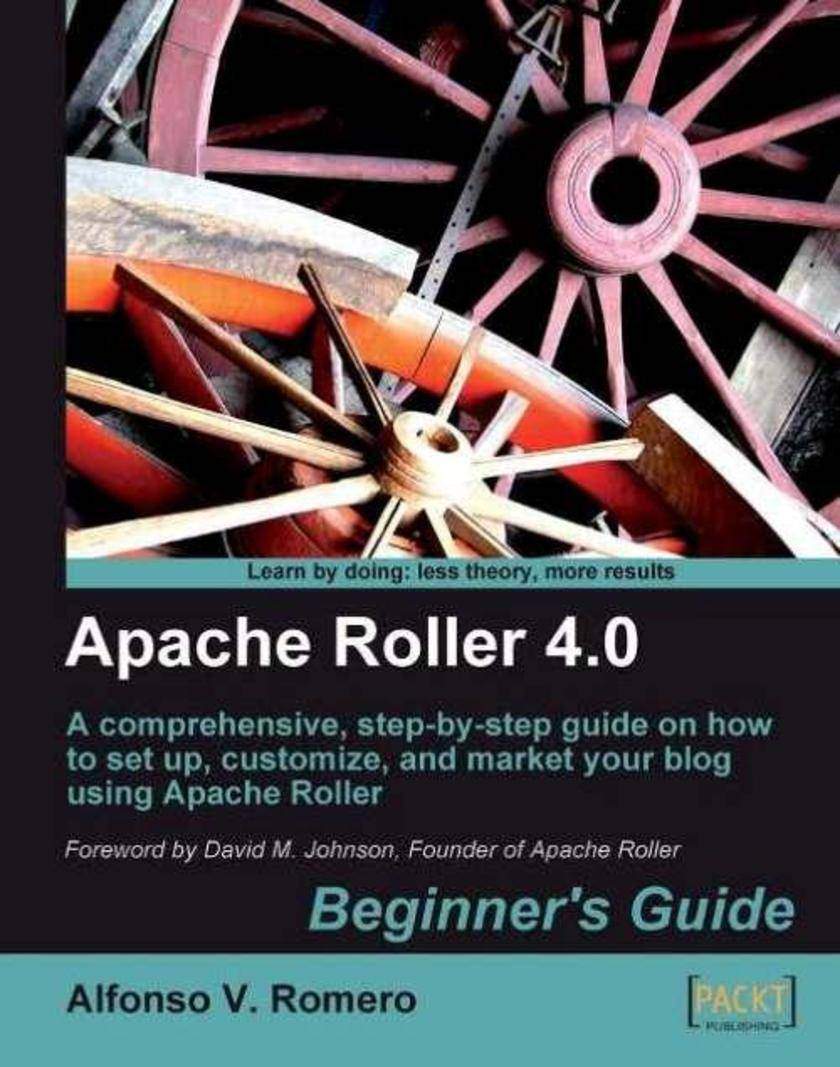
Apache Roller 4.0 – Beginner's Guide
¥80.65
This beginner's guide is packed with information, tips, and tricks, based on the author's extensive experience with Apache Roller. In next to no time, you will be able to build and deploy your own blog. The clear and concise hands-on exercises will teach you everything you need to know to install, configure, and use Apache Roller, along with the open source software required to run it. The book includes plenty of illustrations to guide you through all the detailed exercises and tutorials, so you can get the most out of every chapter. If you are interested in establishing a blog, using Apache Roller and popular web applications to write attractive posts and promote your blog on all the major social bookmarking services, this book is for you. No previous experience on Tomcat, MySQL, the Apache Web Server, or Linux is required.
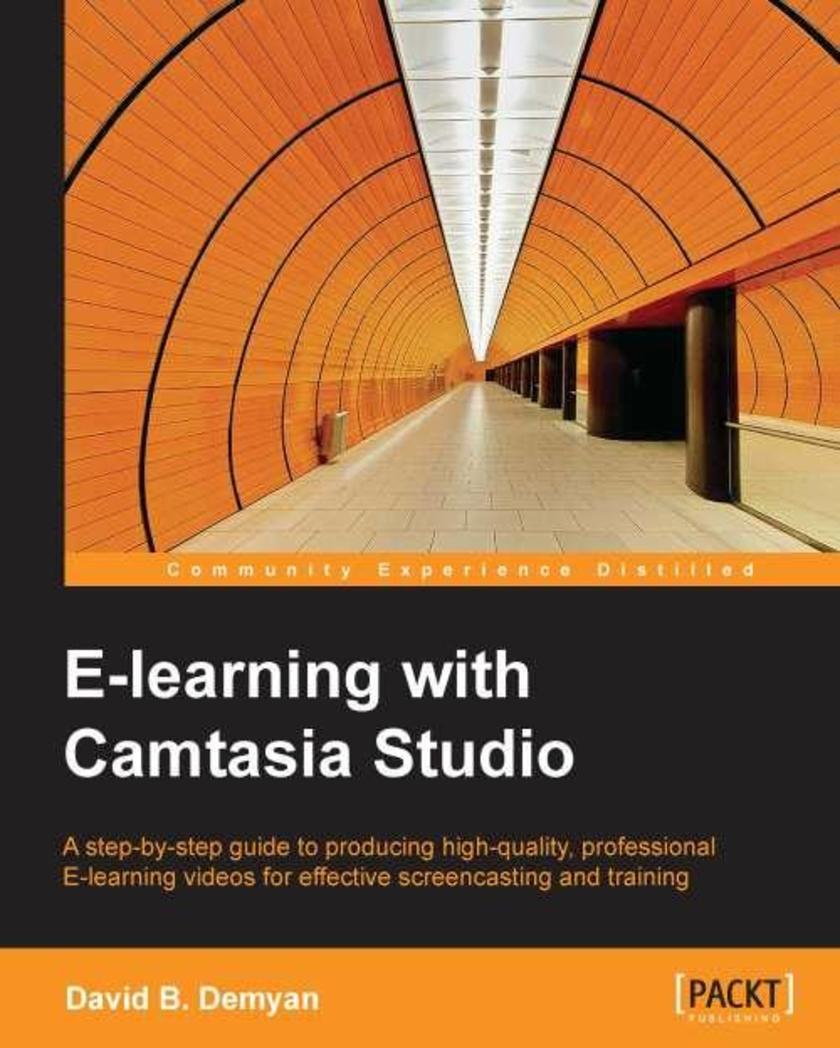
E-learning with Camtasia Studio
¥49.04
If you want to educate people using video learning techniques, this book is for you. Whether you are a teacher, a designer, or corporate learning staff and intend to deliver knowledge through videos, the exercises will benefit you, teaching the indispensable skills to produce and deliver effective educational content. No previous knowledge of Camtasia Studio or video production is required.
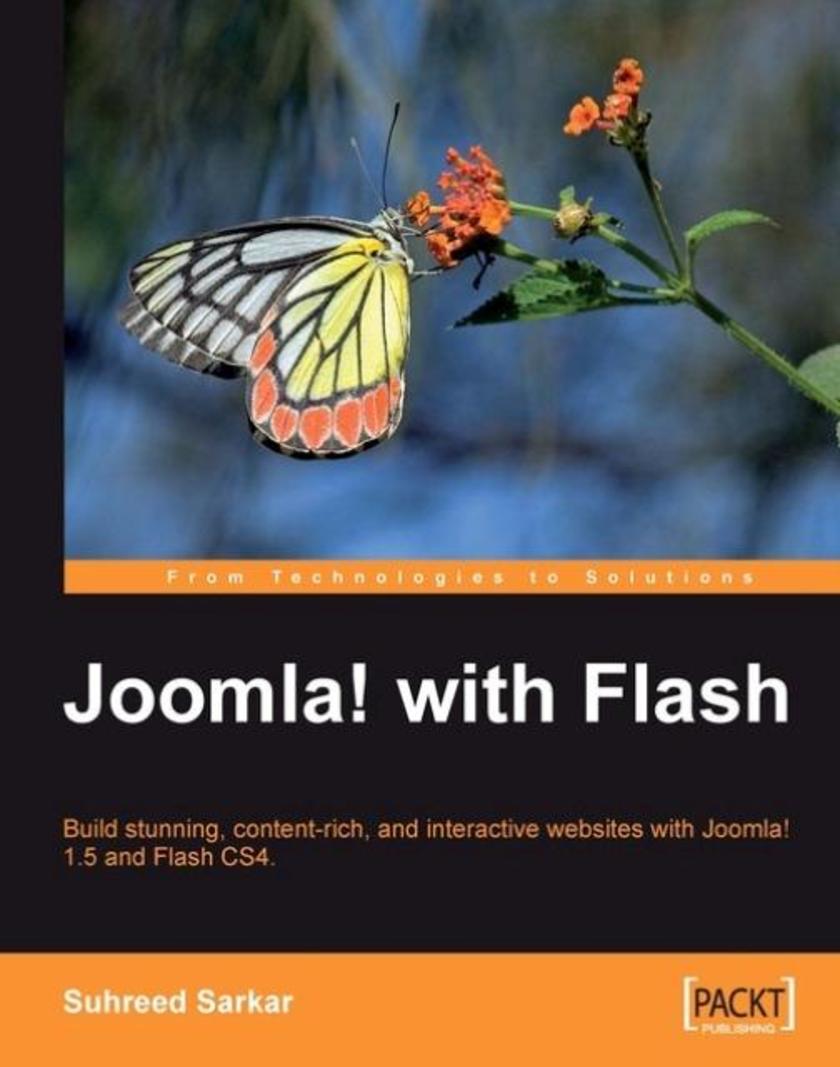
Joomla! with Flash
¥71.93
This book is a fast-paced step-by step-guide. It is loaded with examples and lots of illustrations showing configurations and their results on the screen. If you are a Joomla! web developer who wants to integrate Flash into your web sites, then this book is for you. Knowledge of Joomla! and basic knowledge of Flash is assumed.




 购物车
购物车 个人中心
个人中心



